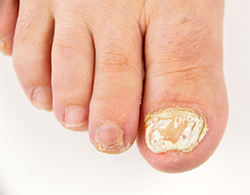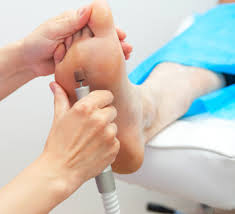Plantar Fascial Tears
Whether it begins abruptly or appears progressively over time, foot pain can significantly impede both physical activities and normal daily activities. Although it can inspire some useful conventional wisdom, foot and heel pain arise from a wide variety of causes and can often indicate a serious injury. Understanding more about some of the more common foot and heel injuries can help make it clear why professional advise may be the best treatment plan.
What is the plantar fascia?
The plantar fascia is a band of tissue along the underside of the foot that is thick and narrow near the heel but broadens to a thin fan-shape near the toes. Its position and structure allows the plantar fascia to act as a kind of “bow string” that stabilizes the arch of the foot.
As one of the most common causes of heel pain, plantar fasciitis, or inflammation of the plantar fascia, may already be a familiar term and often occurs as part of chronic conditions affecting the form and function of the foot. Although plantar fasciitis can be associated with minor tears of the plantar fascia, a plantar fascial tear is clinically more significant and often occurs abruptly.
How does the plantar fascia tear?
Plantar fascial tears most often occur during physical activity and are generally accompanied by a sharp tearing sensation. Risk factors for plantar fascial tears include having a low arch, also referred to as flat feet, and steroid injection treatments into the foot. Chronic plantar fasciitis can also increase the risk of fascial tears.
After a plantar fascial tear, a large bruise and swelling can develop at the site of the tear, which is most often near the heel. Walking with a torn plantar fascia can be very painful, changing the natural stride. Together, the signs and symptoms of plantar fascial tear will likely give a health care professional a high level of suspicion that a tear has occurred. Confirmatory testing with an MRI or sometimes with ultrasound, will clarify the exact location and extent of the tear.
How is a plantar fascial tear treated
Treatment of a plantar fascial tear generally includes two to three weeks of rest and the use of a supportive boot. Physical therapy is also an important part of recovery. Such a treatment plan usually leads to a favorable outcome, including a return to normal activities. Rarely, the conservative approach is less than completely successful and surgical repair is required.
While this article is intended to be informative, it is no substitute for medical advice. If you are in need of a specialist in the care of conditions including plantar fascial tears, consider American Foot and Leg Specialists. With four convenient locations, American Foot and Leg Specialists are able to serve Fulton County, Cobb County, Douglas County, Fayette County, Henry County, Clayton County and the entire South Atlanta metro area. Visit one of our offices in Fayetteville, Forest Park, Locust Grove, or Stockbridge 8:00 am to 5:00 pm Monday through Friday to learn how American Foot and Leg Specialists can help you get you back on your feet after a plantar fascial tear.





